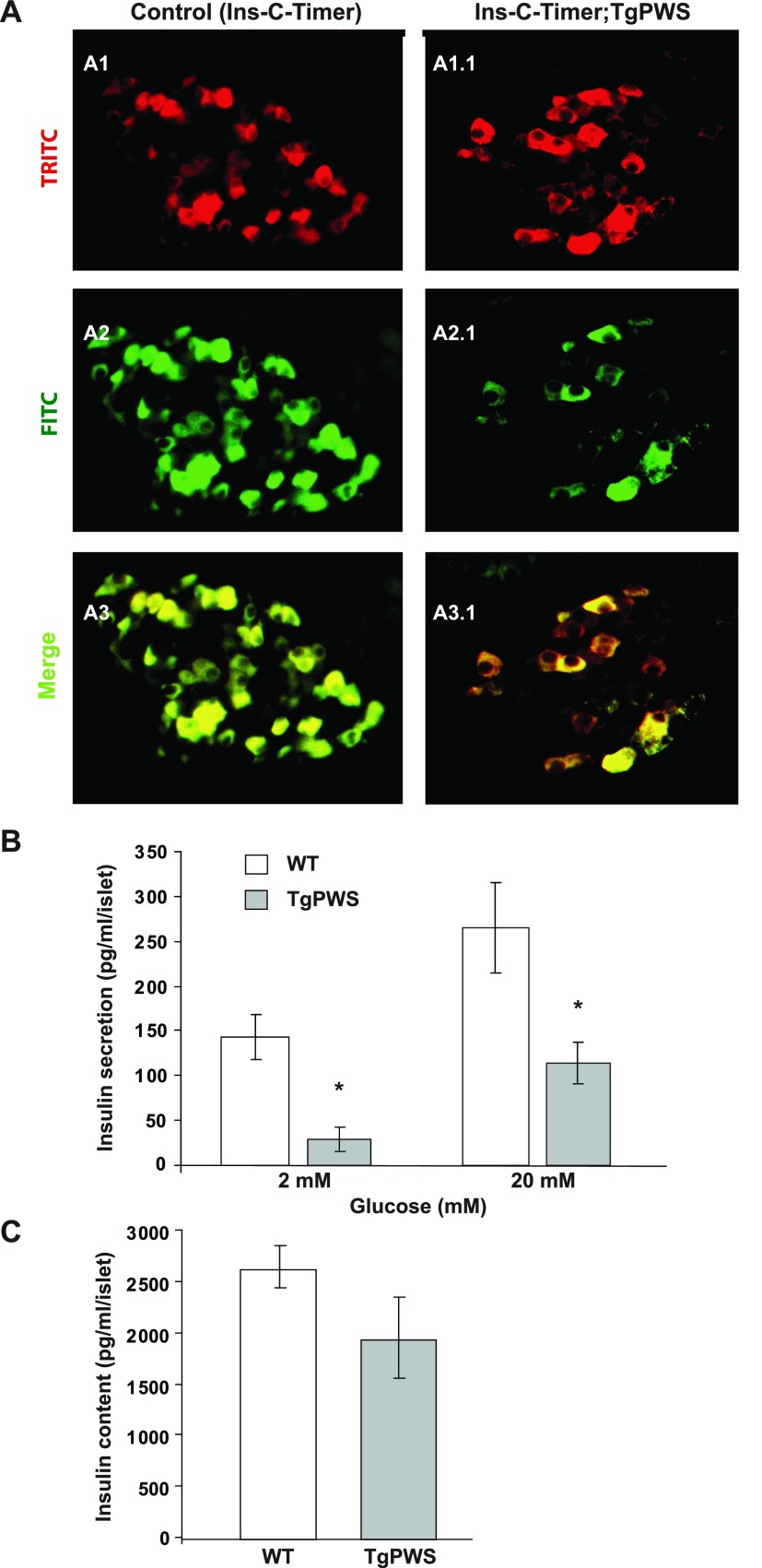Fig. 6.
Altered insulin secretory dynamics in TgPWS islets. A: expression of an Ins-C-Timer reporter was analyzed as a function of age in pancreas sections from TgPWS and control littermates at P1. As is also seen in Fig. 4B, the TgPWS islet has a reduced number of β-cells. The Ins-C-Timer reporter changes color from green to red as time passes after insulin synthesis (5, 22, 46, 65). A TRITC (535/530 nm excitation) filter was used to take images from A1 and A1.1, and a FITC (480/440 nm excitation) filter was used to take images from A2 and A2.1. A3 and A3.1 represent the merged A1-A2 and A1.1-A2.1 images that report on the time since synthesis of insulin. In the control Ins-C-Timer mice, β-cells show predominantly green (newly synthesized) or yellow (intermediate age) fluorescence (A3). β-Cells from TgPWS mice show mostly red (old) and yellow (intermediate) fluorescence, indicating an age-dependent delay in insulin secretion (A1.1–A3.1). B: the amount of insulin secreted was analyzed quantitatively in isolated pooled islets from 5 TgPWS and 5 WT littermates at P1 per experiment in the presence of 2 and 20 mM glucose. C: insulin content was estimated in 20 mM glucose-stimulated islets after acid-ethanol extraction. Results in B and C are means ± SE from 3 independent experiments. *P < 0.05, significant differences between TgPWS and WT mice (independent t-test).

